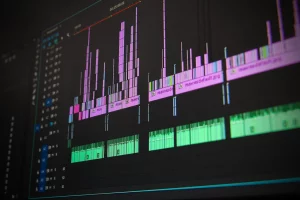How to Write Dates in English: A Comprehensive Guide


How to Write Dates in English: A Comprehensive Guide


Introduction
Accurately writing dates in English is a crucial skill for effective communication in various situations, ranging from academic and professional writing to personal correspondence. While the format of dates may vary between English-speaking countries, understanding the general guidelines can help you convey dates clearly. In this comprehensive guide, we will delve into the details of how to write dates in English, providing you with essential tips to ensure accuracy and clarity.
The Basic Format
The fundamental format for writing dates in English is as follows:
1. Month Day, Year
For instance, you would write:
July 19, 2023
September 2, 2023
In this format, the month is written in title case, followed by the day and then the year. To separate the day and year, use a comma.
2. Day Month Year
In some English-speaking countries, particularly those following British English conventions, the day is written before the month. For example:
19 July 2023
2 September 2023
In this format, no comma is used between the day and the month.
It’s essential to note that when writing the day, a cardinal number is typically used (e.g., 1, 2, 3) rather than an ordinal number (e.g., 1st, 2nd, 3rd). However, in formal writing, such as academic papers or official documents, the use of ordinal numbers is more common and acceptable. British English tends to favor ordinal numbers more frequently than other English varieties.
Additional Considerations
1. Writing the Month
When writing the month, keep the following points in mind:
Always capitalize the first letter of the month (e.g., July, September).
Employ abbreviations for longer month names. While the three-letter abbreviations (e.g., Jul, Sep) are most common, ensure that the abbreviations you use are universally recognized and understood.
2. Including the Year
Including the year is crucial, especially when there is potential for confusion or when writing for formal purposes. Writing the full year helps avoid misunderstandings and ensures clarity.
3. Using Numerical Dates
In some cases, particularly in formal or technical writing, numerical dates can be used. This format typically follows the order of year, month, and day. For example:
2023-07-19 (July 19, 2023)
2023/09/02 (September 2, 2023)
Numerical dates are commonly used in international contexts and can help avoid confusion between different date formats used around the world.
Important Tips for Writing Dates
1. Consistency is Key
Maintain consistency within a document or piece of writing when it comes to writing dates. Choose one date format and adhere to it throughout to maintain clarity and avoid confusion.
2. Be Mindful of Regional Differences
Different English-speaking countries may have varying conventions for writing dates. Familiarize yourself with the conventions used in the specific region or context you are writing for to ensure accuracy. For instance, in American English, the month typically precedes the day, while in British English, it’s the reverse.
3. Avoid Ambiguity
To prevent ambiguity, particularly when writing dates numerically, use leading zeros for single-digit days and months. For example:
2023-07-05 (July 5, 2023)
2023/09/09 (September 9, 2023)
4. Proofread and Double-Check
Always proofread your writing and double-check the dates to ensure accuracy. Errors in dates can lead to misunderstandings and confusion, so it’s important to review your work carefully.
Conclusion
Writing dates in English follows specific conventions to ensure clear and accurate communication. By adhering to the guidelines provided in this comprehensive guide, you can confidently write dates in English for various contexts. Remember to maintain consistency, consider regional differences, and double-check your dates to maintain clarity and avoid any potential confusion.








